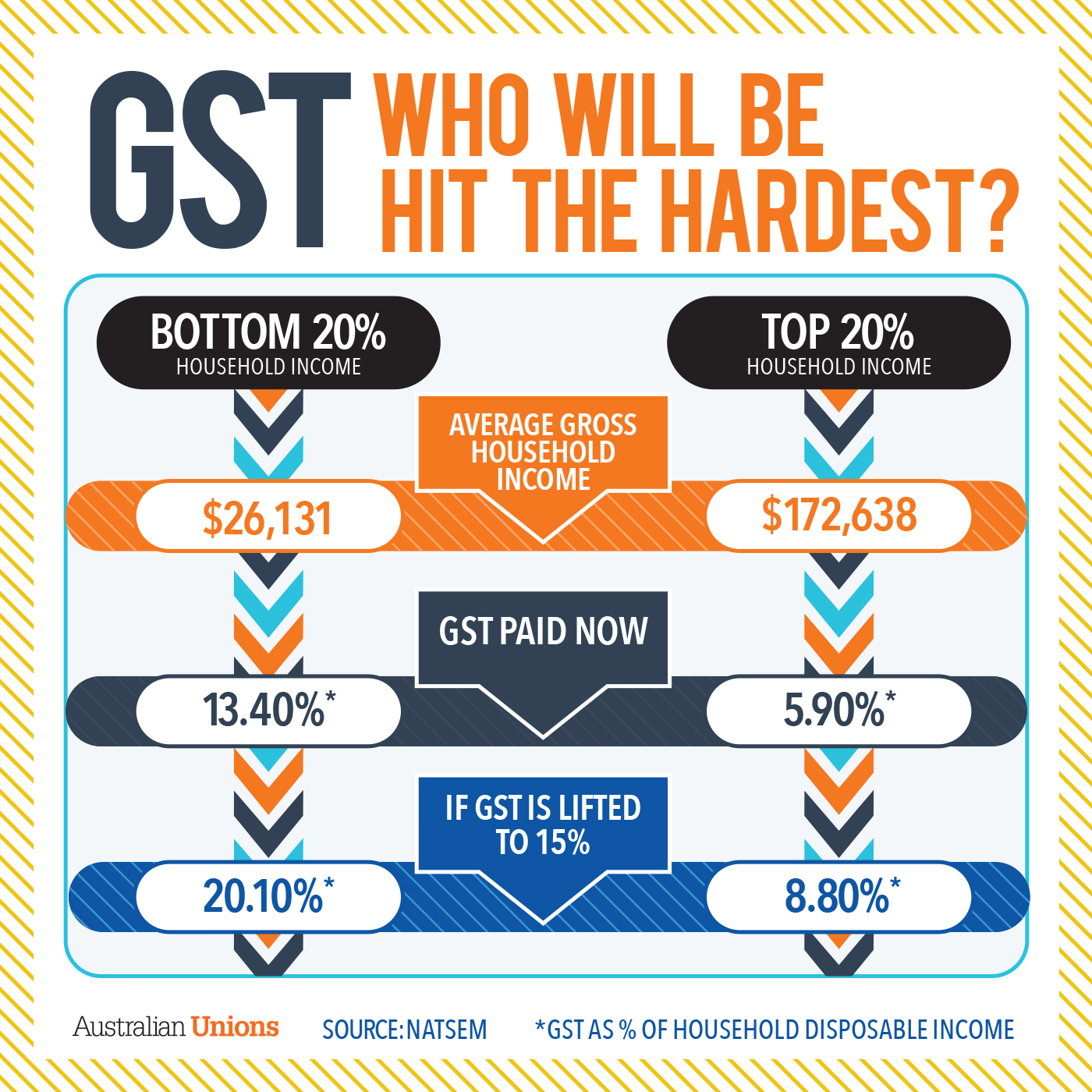Newsletter: GST, Free Nuclear, Homeshare, Annual Report
The 1st of July 2014 seems like a long time ago. We’ve been busy. Our research has led debates, laid out the facts, busted myths, challenged corporate and mining giants, upset more than a few lobbyists and conservatives, and changed minds.
Thank you everyone who has read our work, shared or talked about us, or chipped in to help us do what we do. We exist because you support us. To catch up on the goings on at The Australia Institute, you can now download a copy of our Annual report here.
Contents:
- Go Home on Time Day 2015
- Free energy? – Facts Fight Back applies the Geiger to nuclear
- Our Senior Economist on conservative love for the GST
- Dispatch from Rod Campbell at The World Homeshare Congress
- The Australia Institute in the Media
Go Home on Time Day 2015
Ever find it tricky getting out of the office on time? Or do you have a hard time leaving your work at the office? If so, you’re not alone.
Now in its seventh year, Go Home on Time Day 2015 will be Wednesday 18 November.
For the first time, we’re launching our new overtime calculator: so you can calculate how much you’re donating to your workplace in unpaid overtime.
Sign up to participate and we’ll send you a Leave Pass in the lead up to the day. You can also join the conversation via Facebook and Twitter.
Free energy in a nuclear utopia!
Last week’s announcement of the new Chief Scientist, Dr Alan Finkel, coincided with 61 eminent Australians signing an open letter calling for a moratorium on new coal mines. When asked about Australia’s energy future, Dr Finkel outlined his vision for a world without coal. However, he also raised the possibility of nuclear energy joining the Australian electricity grid. Many nuclear advocates took to the airwaves in the ensuing days. The Facts Fight Back team from Sector 7G of The Australia Institute applied the Geiger Counter to the latest nuclear claims. Read here:
Facts Fight Back – Free Energy with Nuclear Power?
Also published this week in the SMH, Helen Caldicott: Increased uranium mining and more radioactive waste would be bad news for Australia.
Matt Grudnoff on why conservatives love the original ‘great big tax on everything’
The GST has been in the tax reform debate for more than 20 years. Once again, despite the government having no firm commitment to any change, discussion about raising the tax has bubbled to the surface.
The debate rages not just around increasing or broadening the GST but also around the other taxes that the GST would reduce. Proponents of the GST are always keen to stress that there should be ‘compensation’ for those on low incomes, but at the same time the discussion tends to also be on reducing income tax for those at the top end and cutting company tax rates. Spoiler: someone’s going to miss out.
One of the more fascinating parts of the GST debate is that it seems to excite politicians who don’t like taxes. The same politicians that don’t support increasing any other taxes wax lyrical about the GST. Why might that be?
The GST is one of Australia’s most regressive taxes. If the revenue raised from the GST is used to cut progressive taxes like income tax, then high income households will end up paying less tax and low income households will pay more.
The question is: why pick a tax that is so regressive that it will require compensation? There are plenty of other options that are progressive, fix distortions in our tax system and will raise revenue. A good place to start would be looking at the case for fixing super tax concessions, or capital gains discounts or negative gearing. Or how about introducing a Buffett Rule?
The GST debate is being pushed in part by ‘small government’ ideologues who want to cut government services and reduce Australia’s already very low tax to GDP ratio by international standards. Let’s hope that tax reform is not used as a way of reducing Australia’s fair and well targeted welfare system so those at the top end can pay less tax.
– Matt Grudnoff
Infographic thanks to Australian Unions, modelling by NATSEM

Dispatch from Rod Campbell at the World Homeshare Congress
The Homeshare World Congress is on in Melbourne! The ‘what’ World Congress, you ask?
Homeshare is a simple idea. Householders with a spare room are matched up with a homesharer who needs accommodation.
Householders are usually older people living alone, who want to stay living in their own homes. Homesharers are usually younger and commit to being at home at nights and around 10 hours of volunteer chores – gardening, shopping, cooking, etc – per week. Householders get the support, company and security to keep living in their homes, while homesharers get a free place to live.
But for the simple idea of homeshare to work, it needs to be supported by experienced social workers and community organisations to ensure compatible people are matched together and the needs of both people are monitored and supported. Programs need to be funded and supported by governments.
Homeshare programs are already providing great benefits of companionship, intergenerational exchange and housing in places like Melbourne (and here) and Canberra as well as further afield in the UK, Japan and Vermont, USA.
The Australia Institute is supporting the Homeshare World Congress and our Research Director has just delivered his research findings on the economics and politics of homeshare in Australia. Key findings:
- 80 per cent of Australians are ‘concerned’ or ‘very concerned’ about whether they can afford services to stay living in their homes in their old age.
- Even among people earning over $200,000 per year, only 50 per cent said they were ‘confident’ they could afford the services they wanted.
- Homeshare programs are delivering economic net benefits to participants and governments through reduced residential aged care funding.
Read The Australia Institute’s full report here. And feel free to contact me with any questions.
– Rod Campbell
Subscribe to The Australia Institute Newsletter – here.
Between the Lines Newsletter
The biggest stories and the best analysis from the team at the Australia Institute, delivered to your inbox every fortnight.
You might also like
Dutton’s nuclear push will cost renewable jobs
Dutton’s nuclear push will cost renewable jobs As Australia’s federal election campaign has finally begun, opposition leader Peter Dutton’s proposal to spend hundreds of billions in public money to build seven nuclear power plants across the country has been carefully scrutinized. The technological unfeasibility, staggering cost, and scant detail of the Coalition’s nuclear proposal have
Tasmania can afford a new stadium. Here’s how.
The Macquarie Point stadium proposal is controversial. It’s also painfully expensive.
Homeshare: It’s on for young and old
Australians are getting older and almost all of us want to live in our homes for as long as we can. But can we afford the services that will keep us living at home? Research released today by The Australia Institute shows that around 80 per cent of Australians are worried that they won’t be

